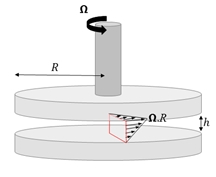Measuring Rheological Properties of Cement Pastes: Most common Techniques, Procedures and Challenges
DOI:
https://doi.org/10.21809/rilemtechlett.2017.43Keywords:
Rheology, Cement paste, Measuring techniques, Experimental errors, RheometerAbstract
The science of rheology is increasingly used to describe the properties of fresh cement paste. Compared to standard workability tests, rheological properties allow for more fundamental investigation, more precise phenomenological description of flow properties and serve as input for numerical simulations. Standard commercially available rheometers are typically used to perform those measurements. However, the results of the measurement depend on the geometry, testing procedure and a number of potential artefacts which may occur. This technical letter describes the most common techniques and procedures used to assess the rheological properties of cement paste, as well as challenges during measurements and actions to counter these challenges.

Downloads
Published
How to Cite
Issue
Section
License
Authors retain copyright of the articles published in RILEM Technical Letters and grant the journal the right of first publication with open access. The work is simultaneously licensed under Creative Commons Attribution 4.0 International License (CC BY 4.0) that allows others to share and adapt the work under the following terms: 1) a proper attribution is given in a form of a reference to the original work's authorship and initial publication in RILEM Technical Letters (bibliographic record with the DOI link); 2) a link to the license is provided; 3) the changes (if any) are indicated.









